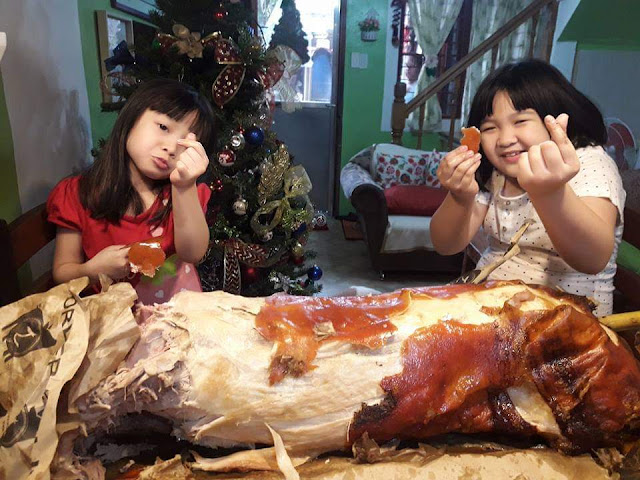One of my favorite discoveries at S&R Membership Shopping in time for its annual S&T Members Treat is the spicy hot Elarz Corned Lechon
I was drawn to it after reading "Corned Lechon" on its cover and instantly added it to my cart after reading "Lagablab" underneath.
The word "lagablab" means "burst of flames" or "blaze" signifying its spicyness. So what more can I ask for?
A quick Googling gave a backgrounder about Elarz Lechon which started roasting juicy pigs since 2005.
 |
| Photo from Elarz FB Page |
They offer a range of flavors and variants which includes Original (Classic Lechon), Lagablab (with Siling Labuyo), Zupremo (A special blend of herbs and spices), and Zebu (Elarz's version of Lechon Cebu).
And now, starting only this year, Elarz made their popular lechon available 24/7 and in convenience of an easy open can.
 |
| Elarz Lechon de Lata variants Photo from Elarz FB Page |
Introducing Elarz Lechon's Lechon De Lata, the canned version of Elarz's lechon, perfect for a quick fix - whether an instant ulam or pulutan.
Elarz Lechon de Lata has five different variants to choose from - Corned Lechon Series ( Original, Lagablab, Zebu, Zupremo) and Lechon Stew aka Lechon Paksiw
It may seem hefty price to pay (PhP 170) for a canned go but when you realize it's lechon, you'd instantly forget about the tab.
I have only tried the Lagablab and it's fiery delicious to the last strand! Straight from the can its juices ooze out that would instantly induce craving with unli-rice.
But to reduce the guilt for this gastronomic pleasure I sauteed it with cabbage strips thus reducing the familiar saltiness of canned goods.
And the next time I will indulge in the cholesterol-feast, I will make it extra crispy - just cooking it until the sauce completely dries up!
Elarz Lechon's Lechon De Lata is priced at PhP 170 at S&R Membership Shopping. It is also available at their store in Makati and in food fairs. For inquiries check out Elarz Pambansang Lechon on Facebook



